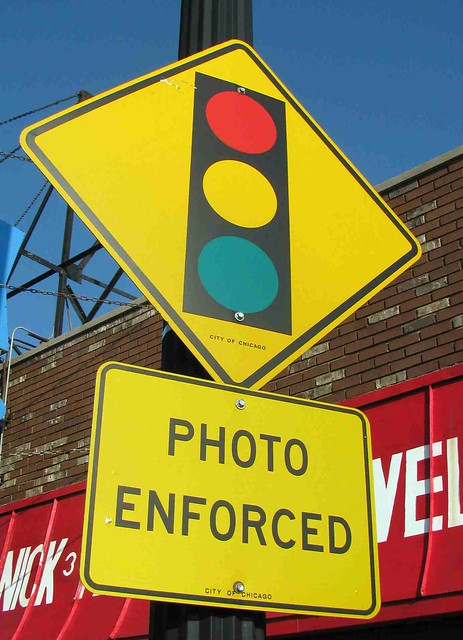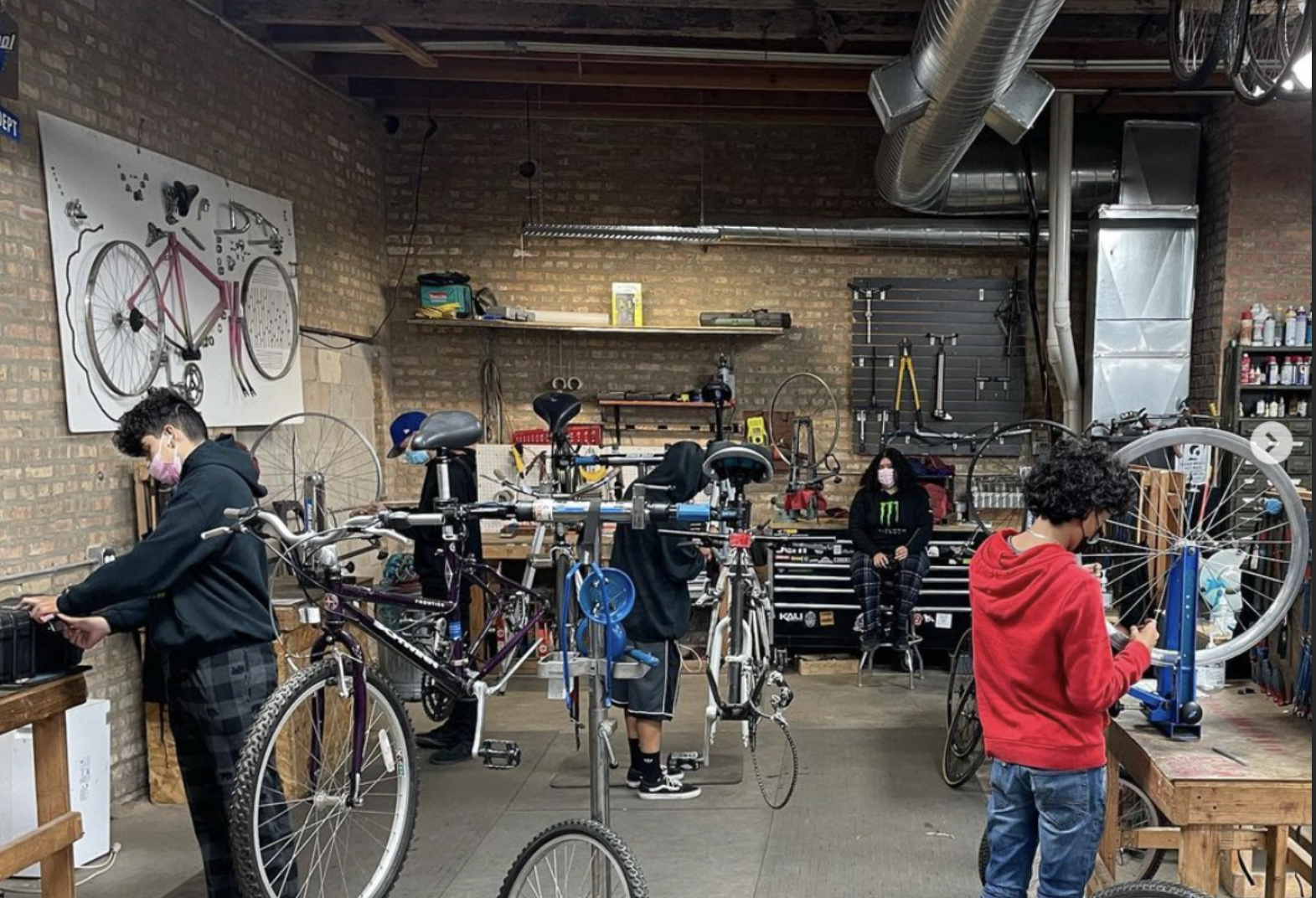Last summer, the Chicago Tribune reported on the mysterious spikes in red light ticketing at dozens of cameras around the city. Recently, the paper discovered the city had started enforcing violations that took place after slightly shorter yellow phases. This resulted in tens of thousands of additional tickets.
Given the track record of corruption in the red light camera program, the press needs to keep an eye on it. However, it appears that the Trib went a bit overboard by conflating the yellow light issue with the program's troubled past.
Chicago Inspector General Joe Ferguson, who has blasted the previous oversight of the red light cam program as "fundamentally deficient," has said that the motorists who got those additional tickets basically deserved them. “We saw no evidence [by the city] of intent to do anything nefarious or unfair,” he said in a recent Chicago Tonight interview.
State legislation for Chicago’s red-light camera program dictates that the minimum length of a traffic signal’s yellow phase should be three seconds, according to Chicago Department of Transportation spokesman Pete Scales. The reasoning for this standard is that motorists expect yellows to last at least that long. If a yellow light was to turn red much before three seconds elapse, a driver might be caught off-guard and blow the stoplight without doing anything reckless.
However, the state law allows for tickets to be issued when yellow lights deviate ever so slightly from the three-second standard, which can be triggered by minor fluctuations in the flow of the electrical current to the stoplight, according to Scales. So if a yellow phase dips a few hundredths of a second below the standard, the ticket is considered legal. “Those slight deviations are imperceptible to the motorist,” Scales said.
While RedFlex Traffic Systems, the previous red light camera contractor, was running the program, the city directed the vendor to set the cameras so that they would only issue tickets when a driver ran a red following a yellow phase of at least 3.0 seconds. Last year, in the wake of allegations that the company bribed a CDOT official, the city fired the company. This February, Xerox State & Local Solutions took over the contract.
Since then, administrative hearing officers have started to see tickets issued for reds run after yellow phases between 2.9 seconds and 3.0 seconds. Although these tickets were legal, some of the officers, who operate independently from CDOT, threw out the violations. A recent Tribune investigation discovered that 77,000 tickets had been issued for violations that occurred after sub-three-second yellows, resulting in $7.7 million in fines.
Chicago Tonight interview with Joe Ferguson.
After the Tribune report came out, Ferguson’s office issued a report that found the city told Xerox to set the equipment to issue tickets after 2.9-second yellows. In September, the department changed the standard back to 3.0 seconds in order to eliminate confusion and regain the public’s trust in the program, according to Scales. In a recent meeting with the Trib’s editorial board on Wednesday, Emanuel said he wouldn’t rule out the possibility of refunding fines from the shorter yellows.
The Tribune has spun the city’s original decision to change the yellow-light standard as a cynical maneuver. Here’s a passage from a recent article titled “How Chicago's red light ticketing turned yellow lights into cash”:
Emanuel's back-and-forth yellow light policy casts further doubt about the fairness of Chicago's decade-old camera system, long billed as being about public safety and allegedly built on a bribery scheme at City Hall. It is also the latest example of inconsistent enforcement in a program the inspector general says was plagued by city mismanagement, failed oversight and a focus on keeping the cameras rolling.
However, in the Chicago Tonight interview, Ferguson said he didn’t see a problem with the city setting the cameras to issue tickets after imperceptibly shorter yellows:
"There wasn't a change in yellow light times themselves. There was a change in the standard that was used to decide who to cite and not cite. But with respect to those 77,000 additional [violations issued] within that fraction of a second, those folks were all pretty much still breaking the law. … I think there has been a lot of misunderstanding and misreporting, quite frankly, around this. The law is the law. And these fractional differences -- we’re talking about milliseconds in a world in which three-tenths of second is the standard for human reaction time -- [were] not even close to that.”
CDOT's motive in lowering the yellow-light standard last February is unclear. The decision did increase revenue, but it also eliminated a loophole that allowed tens of thousands of drivers who ran reds to escape without tickets.
The Trib coverage failed to acknowledge the potential safety benefit of closing this loophole. The yellow light times had not been adjusted, and those motorists still decided to enter intersections after the light was red. They deserved fines. While it may have been politically necessary to reverse the decision, tightening the standard for issuing red light tickets made sense.




